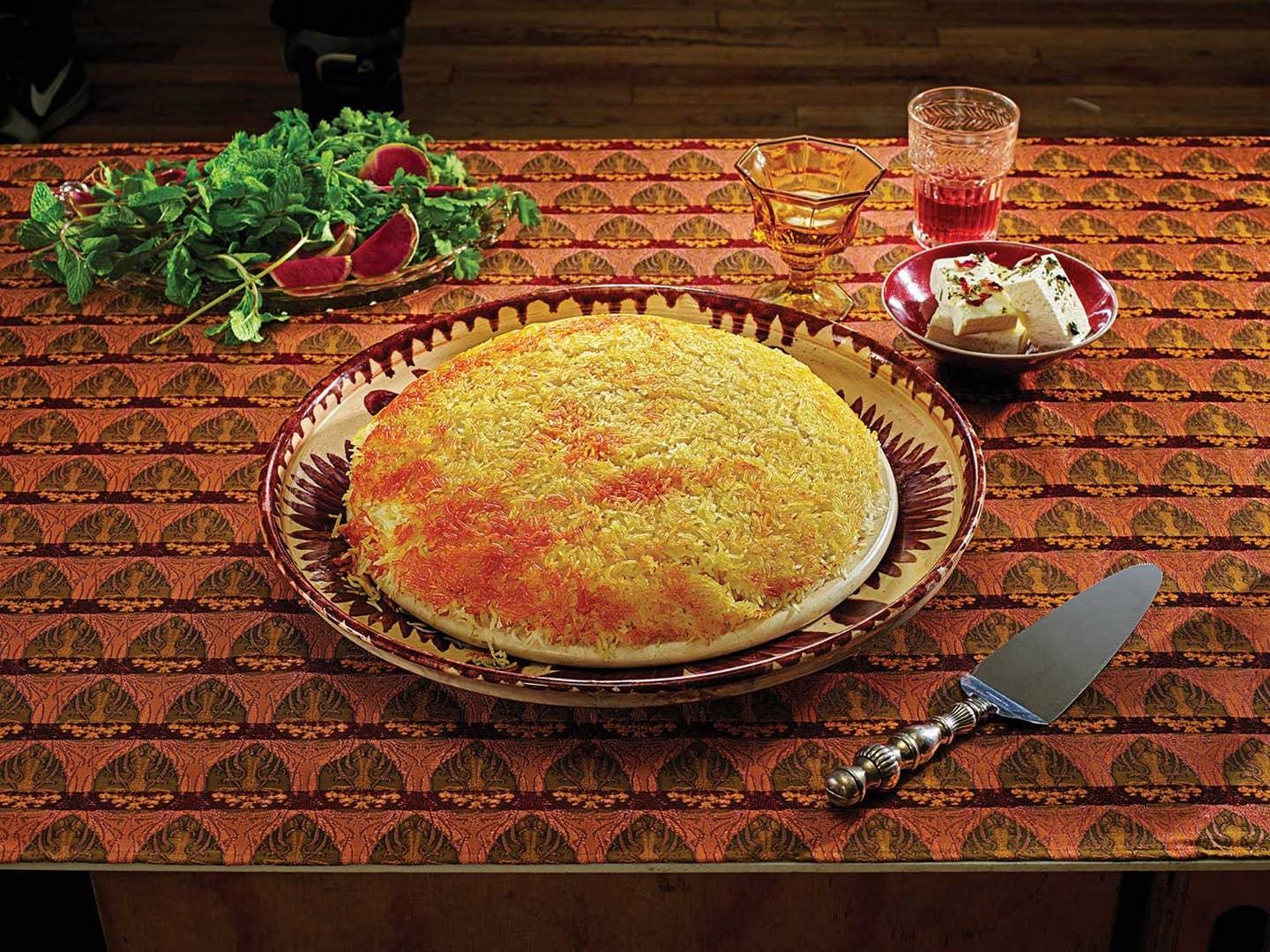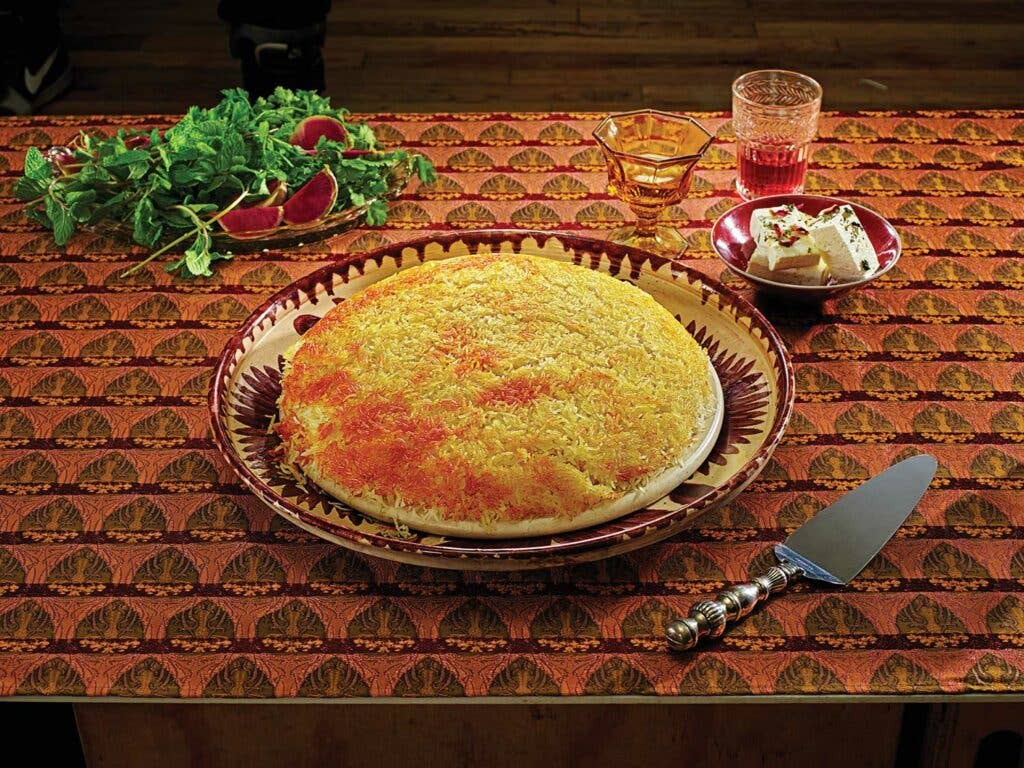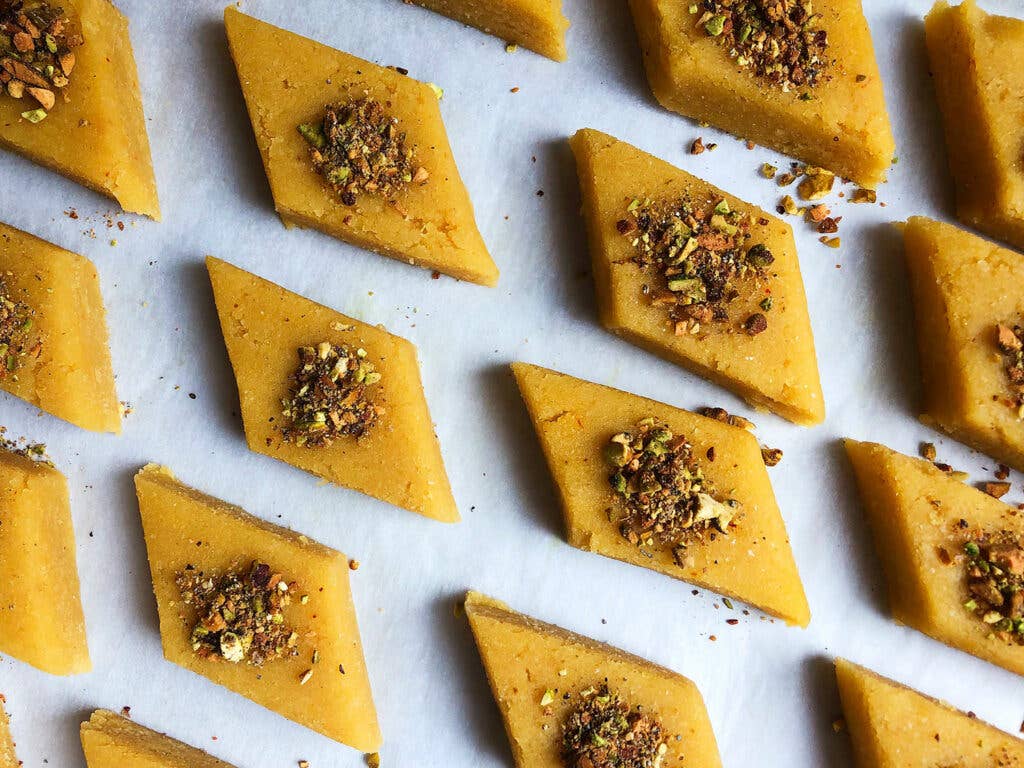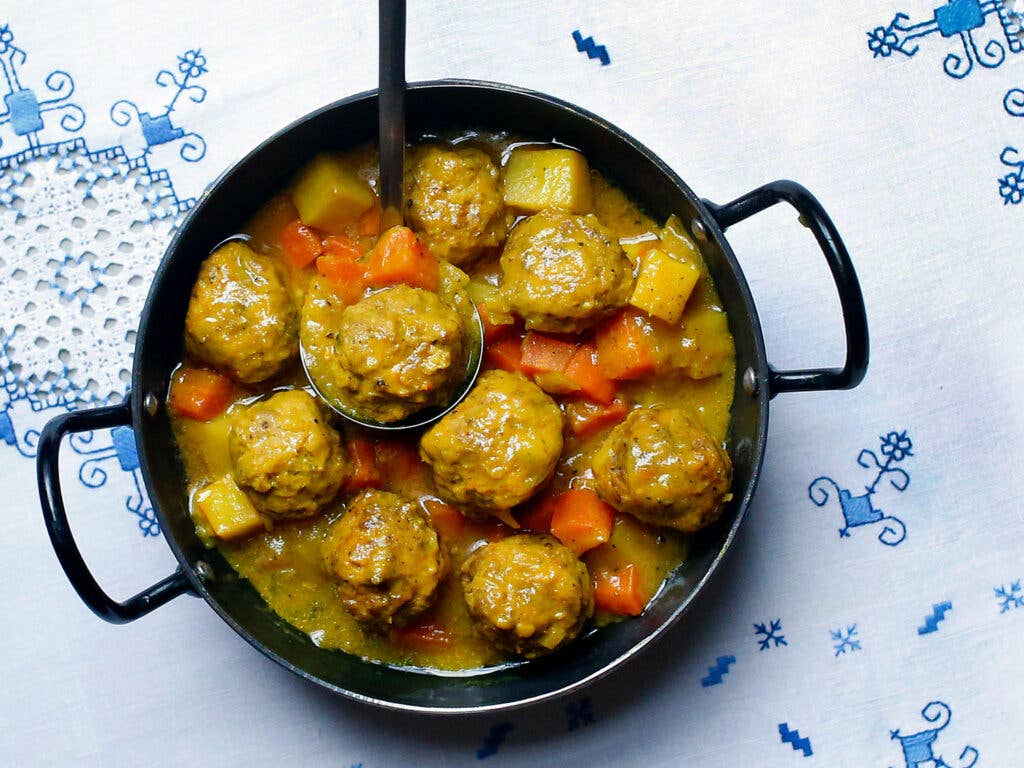
How to Start Cooking More Persian Food
A simple primer to building a pantry of Persian staples and tackling some foundational techniques
Persian cuisine is notoriously hard to pin down. Once a vast empire that spanned the Middle East, now when we talk about Persia, we're usually talking about Iran, a large, diverse country with a rich culinary tradition: aromatic rices, slow-cooked braises, stews layered with bright and sensuous flavors.
Bordering several countries including Iraq, Turkey, and Pakistan, Iran is a conduit between the Middle East and the rest of Asia, and as a result, many of the country’s typical dishes and ingredients have originated in or traveled across this unique cultural bridge. A bit smaller than the state of Alaska, the climate of Iran also varies greatly. Its coastlines—on the Caspian Sea to the north and the Persian Gulf to the south—are lush and almost tropical, while the interior of the country is arid and mountainous, producing a rich array of local ingredients.
We asked two of our favorite Iranian chefs, Najmieh Batmanglij, author of Cooking In Iran, and Nasim Alikhani, chef and owner at Brooklyn's Sofreh, to share with us their tips on how one might build a pantry of Persian staples and get started cooking more of the region's beloved dishes.
Step 1: Building a Persian Pantry
Given the vastness of Iran, what’s essential in one region might be different in another. In northern Iran, for example, dishes lean toward the sour side, incorporating ingredients like local sour oranges, cherries, and plums. Elsewhere in the country, you might find more sweetness present, with combinations like vinegar and grape molasses in central Iran, and tamarind and date molasses in the south. But there are certain ingredients that should be part of any Persian pantry.
Rice
“The signature of Persian food is rice,” says Batmanglij, who claims Iranians make it the best, in part because there are so many varieties—basmati, jasmine, even “broken” rice, often used for soups and meatballs—but also because of how it’s cooked.
In Iran, rice is typically prepared chelo-style, where it's parboiled first, before being drained and then steamed. In the process, the grains become long and fluffy. Many rice dishes are heavily aromatic, infused with other classic ingredients like saffron or rose water. But the most heralded form of Persian rice might be the golden crust, or tahdig, which forms when the rice, cooked in butter or oil, cooks to a crisp at the bottom of the pot.

One of Alikhani's favorite dishes is morasa polo, or jeweled rice. Typically prepared with long grain rice and garnished heavily with a mix of almonds, pistachios, raisins, barberries, and heaps of saffron, it's a dish that can take as many forms as their are Persian cooks. "To me, it's a complete meal," says Alikhani, who spices her version with cinnamon. "Every bite has something. The toasted nuts, the quickly fried raisins with cinnamon—it's so satisfying."
Spices
For cooking many Persian dishes, you’ll need to stock your kitchen with about half a dozen essential spices. “Turmeric is number one,” says Alikhani. “I do not cook anything without turmeric.” And, “saffron, of course,” says Batmanglij. Other must-haves include cumin seeds, cardamom, cinnamon, sumac, and rose petals.
Persian spices are versatile, ranging from earthy to savory; some potent, others delicate; showing up in entrees, rices and desserts. "Iranians love dessert," Batmanglij says. Her saffron almond cake, a fragrant marzipan-like treat, is infused with both saffron and rose water.

Herbs
Herbs and spices might get lumped together in some minds, but not so for your Persian kitchen. “For us, herbs are considered vegetables because they are the body of the dish,” says Alikhani. “They’re not garnishes or flavor enhancers, they are actually making the dish.” Some recipes call for pounds of fresh herbs, often a mix of parsley, cilantro, scallions and dill.
Because of how they're used, most of the time herbs should be fresh. But Batmanglij suggests using dried mint and dried fenugreek leaves, as their flavors are often more potent than fresh leaves. Kuku sabzi, is one of Iran's most renowned dishes, features fresh herbs prominently, folded into a rich egg frittata. "In the North, by the Caspian Sea, there are so many varieties of kuku," says Batmanglij. They may use quail or duck eggs, occasionally potatoes, occasionally walnuts or barberries, but always lots of fresh herbs.
Fruits
While legumes and vegetables are used abundantly in Persian cuisine, fruits are what give many dishes their unique quality. According to Batmanglij, "Iranians love the idea of mixing fruit and meat," noting that sweet-and-sour or sweet-and-savory dishes date back to the sixth century in Iran. The country is rich in fruit, including limoo omani, or dried limes, which have a "very interesting earthy flavor that you cannot find in any other sour agent," says Batmanglij. Quince, sour plums and cherries, and a variety of berries, such as barberries, are used prominently throughout Iran. Many fruits, such as dates, grapes, and pomegranates, are cooked into a thick, sweet-and-sour molasses used for cooking. "Iranian cooking is often divided into two categories: cold and hot," says Batmanglij. "Lamb is considered a 'hot' meat, and when you add fruit, you create a balance that works very well."
Meat
Some think Persian cuisine is heavy on meat, but while many recipes use lamb, beef, and other proteins, they're actually used quite sparingly, like a flavor enhancer. "One pound of meat can serve eight people easily," says Batmanglij. A "humble but delicious" family recipe from Alikhani is koufteh ghelgheli, a dish of little meatballs made with lamb and chickpea flour and served in a lemony turmeric broth. "They fall apart in your mouth," the chef says fondly.

Step 2: Recipes and Techniques To Try
Persian kitchens are traditionally quite simple, so there’s no need to invest in fancy equipment. But some good tools and techniques are invaluable.
Grinding and Blooming Saffron
The way you use saffron is very important. “Saffron should not be used as whole threads,” says Batmanglij. “To get the best flavor, aroma and color, it should be ground and dissolved in hot water.” (Just don’t use boiling water; some cooks say it destroys the “soul” of the spice.) Batmanglij suggests using a spice grinder, which is easier and quicker than the traditional mortar and pestle. For grinding small amounts, you can simply rub the threads through your fingers a few times until they’re sufficiently pulverized.
Try: Naz Deravian's chelo-ba tahdig, a crispy, golden rice infused with saffron.
Soaking Herbs
For all those herb-based dishes, a good soak in cold water and a splash of white vinegar helps herbs get clean and stay crisp. Batmanglij soaks her herbs for 10–15 minutes, then runs them through a salad spinner to ensure they're dry before incorporating them into dishes, or serving raw on a platter, as an accompaniment called sabzi khordan.
Try: Anissa Helou's kuku sabzi, an herb-filled Persian frittata.
Slow-Braising
Beyond smart techniques, many Persian dishes simply require time. “Some dishes may need half an hour; some dishes may need four to five hours,” says Alikhani. “They need to be given that time. There are no shortcuts.” She shies away from using pressure cookers or increasing heat to expedite cooking. “Time and attention to detail are cornerstones in terms of technique.”
Try: Nasim Alikhani's koufteh ghelgheli, lamb meatballs with carrots and potatoes in a lemony turmeric broth.
Iranian Noodle Soup (Ash-e Reshteh)
This spiced vegetable soup is made with reshteh, Iranian noodles. Get the recipe for Iranian Noodle Soup (Ash-e Reshteh) »
Layering Flavor
Alikhani also relies on a technique she calls layering. Much like a painter, “you start with a plain canvas. You keep adding and adding—you don’t just dump everything in,” she says. This is partly because everything gathers in one pot in Persian cooking: “Unlike Western cooking, where you prepare your vegetables, proteins, and starches separately, and then plate them together,” Alikhani says, in Persian cooking, “everything is done in one pot. You have to give it the same treatment and respect. That is essential.” With that time and respect inevitably comes thoughtfulness. “When I wash my hands, about to do my work, in that same moment, I clarify in my head: I’m preparing a meal to feed not only the body, but also the soul. That reminder sets me in the right path.”
Try: Anissa Helou's ash-e reshteh, an Iranian noodle soup with beans and spinach.
Keep Reading
Continue to Next Story










